Interview: James Hinton aka The Range
There are heavily anticipated albums that disappoint, and albums you happen upon by chance that turn out to be a surprising favorite. James Hinton, under pseudonym The Range, has taken the concept of sampling and production to new heights on his 2016 album, Potential, and we had the chance to chat with him leading up to his appearance in Seattle. Inventive and intriguing, his work creates lush soundscapes that include samples he’s excavated from the depths of YouTube. His tracks evoke storylines that hinge on emotional resonance, something that is often overlooked in today’s DJ/producer realm. The Range will be opening for Phantogram at The Paramount Theatre on October 7th. The show is currently sold out.
Seattle Music Insider: Should I call you James?
James Hinton: Yes. James is great. What’s your name?
SMI: Sunny.
JH: Oh, good to meet you.
SMI: Nice to meet you as well. I’m interviewing you for Seattle Music Insider, and I’m not even going to lie, I just discovered you this week, and I completely fell in love with your new album.
JH: Oh, thank you so much.
SMI: Yes. I don’t want to take up too much of your time, but I do have a few questions, and I hope I’m not asking the same questions that you’ve been asked in previous interviews. Are you excited to come to Seattle?
JH: I am. I really, really love that city. I love the whole Pacific Northwest, rain and coffee and all that stuff, so yes. It’s a really, really nice place to be. Do you like it there?
SMI: Yeah, yeah. I’m actually a transplant and I’ve been here for about four years.
JH: Cool.
SMI: I did read up on you and noticed that for your 2016 album, Potential, all the vocals were recorded from live YouTube videos that you found. Let’s say for your next album, do you think you would follow the same method in finding specific YouTube videos with vocals, or do you think you would go a different route?
JH: I think I like the idea of every album as part of a bigger narrative, so the album previous is called Nonfiction. When I listened back, I’m like, okay, the ideas are almost there that I worked on for Potential, because there were some vocals that were samples from YouTube, but I don’t think I had put two and two together, so I’m sort of hoping that the next album, I’m starting to kind of explore different ways of maybe extending the idea of YouTube search.
It’s an amazing format, but I’m also like, Potential was the YouTube album. Does that mean I go to libraries and I’m trying to find old, forgotten recordings, or maybe there’s another way. I kind of want to always be developing new things. I think it’s an amazing thing, so maybe part YouTube and then part perhaps other things to contextualize the YouTube videos a little bit.
SMI: Are there any artists you’d love to collaborate with if you don’t use YouTube?
JH: Yes. For a very long time, I’ve not wanted to do that. Not as like, a protest, but I think a lot of electronic musicians do this whole thing where you make a bunch of beats, you send it to a bunch of other people, they write something, and it can be very disjointed. I’ve always been kind of conscious about wanting to protect against that, but now I’m opening up and I’m wondering if having a bunch of other musicians, if that is something that’s kind of fun. I’m working on an EP right now that does have collaboration, so we’ll see how that goes. It should be kind of fun.
SMI: Was there a specific moment or video or some type of actualization that you realized that YouTube was the perfect match for the samples that you were looking for?
JH: Yes. The opening track is called “Regular” on the album, the sample is, “Right now I don’t have a backup plan if I don’t make it,” and that to me, it slowed up everything I liked about YouTube, because I like that that’s where people go if they are curious about trying to do music or put themselves out there in some way, shape, or form, whether that’s blogging or something like that. It’s a very aspirational medium, and I like that it’s out there, and I also like the fact that even though I could only sample audio, that the video exists and people can look at it.
I think that’s one of my favorite parts about Potential is that the samples are already out there and people can see where they’re from. It adds another wrinkle to everything, and so for me, that was the moment when I was like, “Aha, this connects with me, as well.” This is how I’m feeling about my own musical life and career and everything at that moment, but it’s also connecting the medium, so it was a big revelatory moment, and I think that that’s why it had to be the first track on the album because I think it sets the tone for the rest of everything.
SMI: So how does the conversation go when you go and ask for someone’s permission to use a clip?
JH: I try to imagine what it would be like if someone did that to me, like they found some piece of material that I had done four years ago or something, because a lot of them were from quite a bit of time ago, but they were kind of amazingly really happy and responsive, all of them, which I still consider a little bit miraculous.
Once you got over the hump of them understanding what it actually was that I was doing, fortunately, most of the songs were finished for the most part before I showed it to them, so they could get a sense of what I was going to do, but I think people were excited because it was just something new and refreshing. It’s not necessarily an opportunity, but giving life to something that would otherwise be just on YouTube. I think it was varying levels of excitement across the board, which is quite cool.
SMI: Awesome. No one has ever said, “No, you’re not allowed,” or not happy with you using the clip?
JH: Surprisingly, on the album, no, it didn’t happen. I’m positive if I continued, just realistically, it would definitely happen. What I can mostly imagine is if stylistically, if they happened to like different music or something, they didn’t like that, but I think I tried to marry the sentiments of the original videos and keep them intact, so I think that had a lot to do with the fact that I wasn’t trying to change what people were saying. I wasn’t trying to make something that was supposed to be uplifting sad or trying to change that, and hopefully that’s part of the reason why people were happy and excited to be a part of it.
SMI: What would you consider to be your top two or three picks of the new album? Which songs do you like?
JH: I think “Florida” and “Copper Wire” are the ones that I think are the most fun to play live. I think some of my favorites are definitely “Falling Out of Phase,” and I really, really like “Retune.” I think that’s a fun one, even though it doesn’t really have lots of narrative vocals. It’s something I think is very pretty still, and I still really like “1804.” Those are my three favorites.
SMI: It’s always nice to hear. I know the song that caught my attention, which is why I reached out, but for some reason I really like “No Loss.”
JH: Oh, that’s so good. You’re one of the few people for whom that’s the highlight. That’s really, really interesting.
SMI: I heard it, and then I had to keep replaying it, and then I was like, “I have to learn more about this guy. This is awesome.”
JH: I think that’s a funny one. That’s one of the few ones that has a drum break on it, and I think for a lot of people on this record, at least in America, it’s not necessarily their thing. I’m really happy to hear that. That’s another favorite of mine. I remember making that one very, very vividly.
SMI: Hopefully I’ll get to hear it live.
JH: Yes. You should come to that show.
SMI: Yes, I’m hoping to. Listening to the album without knowing the background or how tracks are created gives one feeling, but once I read the background of it, there’s a much deeper understanding, almost an emotional connection. I imagine that live, another feeling would come out from that. Is there a feeling that you’re trying to convey live?
JH: Oh, live? Yes. The album to me is very much, not a downer, but it’s heavy in parts, and I think there are lighter tones, and I try to bring those out during the live show. For instance, “Retune” I made a bit of an edit and changed it so it’s a little bit more upbeat. Particularly for these shows where I’m opening for a band and it’s only a 45 minute slot, there’s not as much room as when I would play for an hour, an hour and 15 minutes, to paint the trajectory and go into upbeat areas and downbeat areas.
For live, for now, I definitely am trying to showcase a lot more of the percussive nature of it and to bring the melodies out, as opposed to “No Loss” for instance, I start quite far in advance and try to get it a little bit further instead of having this long build that you would normally get in a longer show.
SMI: Wow, okay. Cool. Will your stage be reminiscent of some of the YouTube clips you’ve used, or would you use the documentary that you did?
JH: Unfortunately, I don’t have it with me for this tour, so this tour will just be sort of a set of flags that are the album artwork to give the mood. It was a really, really fun thing. I made this sort of screen that’s translucent, but if you project light, a little bit of light holds on so you can form an image. For the shows that I was doing in May, you could project the people’s faces from YouTube but still see me, if that makes any sense, through this screen. I had the screen up in front of me and then the projector behind, and I thought that was a really nice metaphor for what was going on, so I could bring in people when their songs are up, and they have their words synced up to everything. That was a really, really fun thing, but it’s very fragile, and I worry about flying with that apparatus, so I didn’t bring it.
SMI: Awesome. If you were stuck on a desert island, what is one album, one film, and one book that you would bring with you?
JH: Very interesting. For a book, if I actually was stranded, I’d probably want to kill myself in that position, but there’s this amazing book called The Master and His Emissary that’s about the brain. That’s my current obsession, so let’s go with that one for book. For album, probably Sigur Ros, Untitled.
SMI: Oh, nice.
JH: Yes, for some reason in the fall, that always comes back.
SMI: What about one movie?
JH: Tough to pick just one. Let’s do Star Wars: A New Hope.
SMI: Nice. It’s awesome that you mentioned Sigur Ros, because actually the venue that you’re coming to on Friday in Seattle, Sigur Ros was just here a few weeks prior at the same venue.
JH: Oh, incredible. I saw that they’d been touring.
SMI: They’re amazing.
JH: I’m a total geek over them. I think they’re incredible.
SMI: It was a really nice show. I’m glad I got to see that, because I know they don’t tour that often.
JH: Yes. I remember I saw them when they were touring the Untitled thing way back, that would have been 2006 or ’05 or something. It was incredible.
SMI: You’re touring with Phantogram right now. After that tour, do you plan to hop onto another tour, or are you taking a break?
JH: It’s been quite heavy, so I’ll probably play a couple of, it may even be in Seattle actually, a couple DJ sets in late November and December, and then I’ll probably take off through the holidays, and then touring again in January, so no, I’m not going straight.
SMI: Well hopefully we’ll see you in Seattle not once but twice in the next year or so.
JH: Yes. That would be really, really good.
SMI: Cool. Thank you so much for taking time to chat with me.
JH: Yes, you as well. Thank you so much, and hope to see you at the show.
Photo courtesy of Alexandra Gasillet

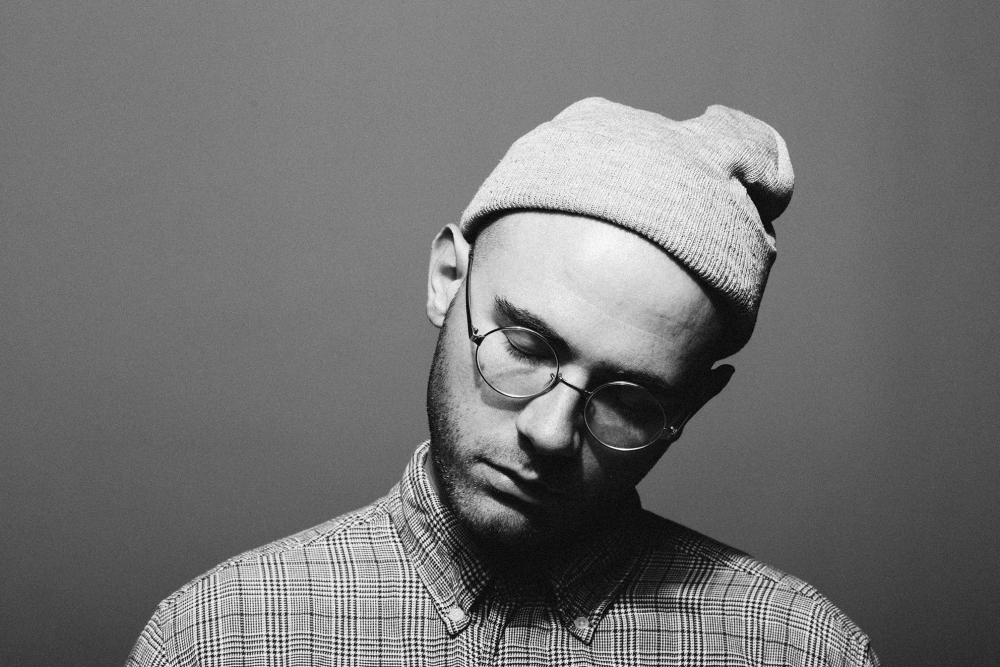
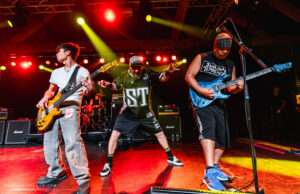
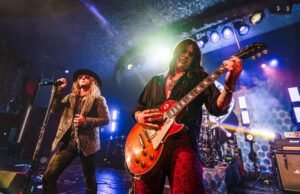
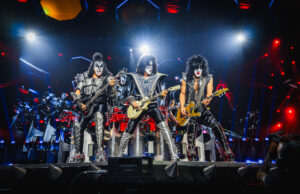
0 comments